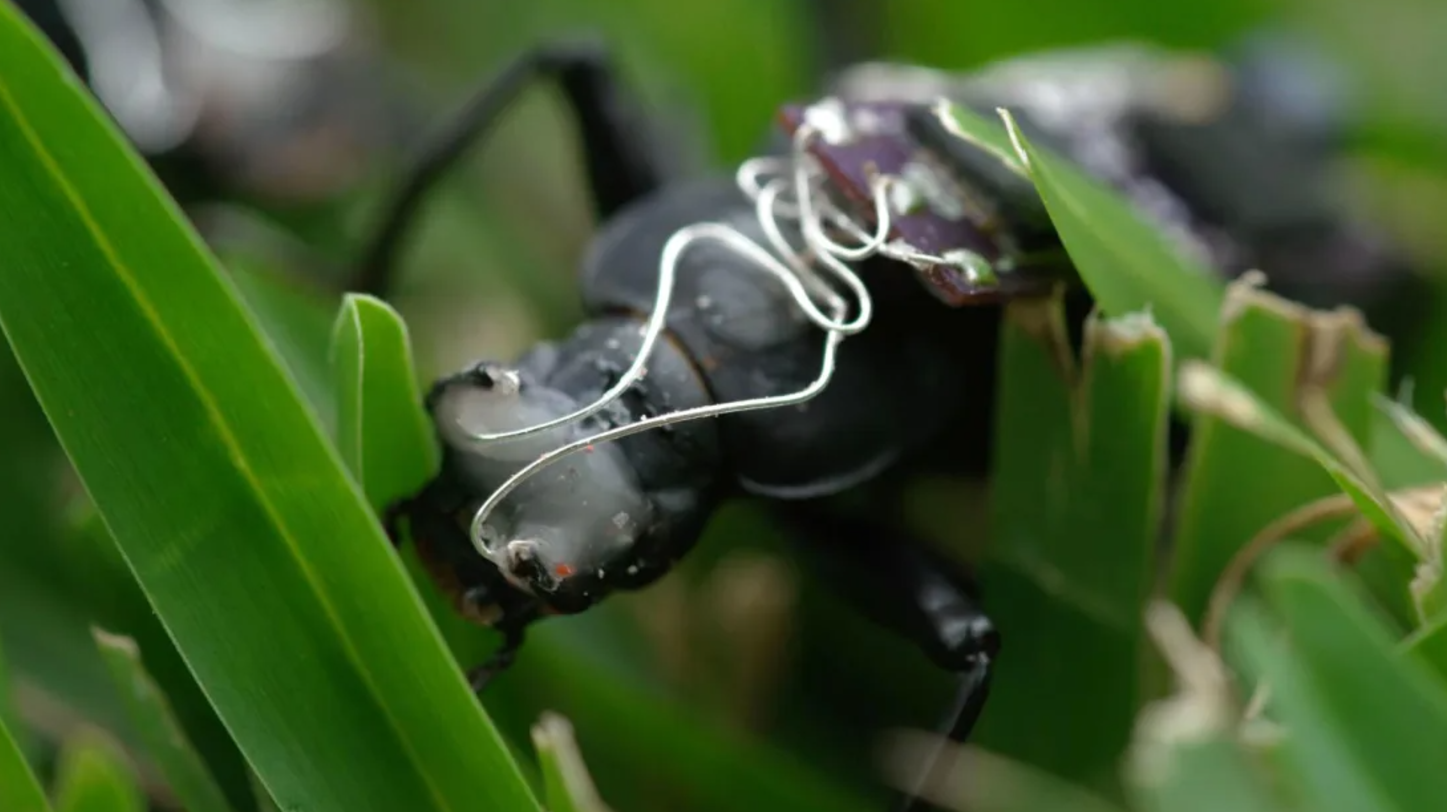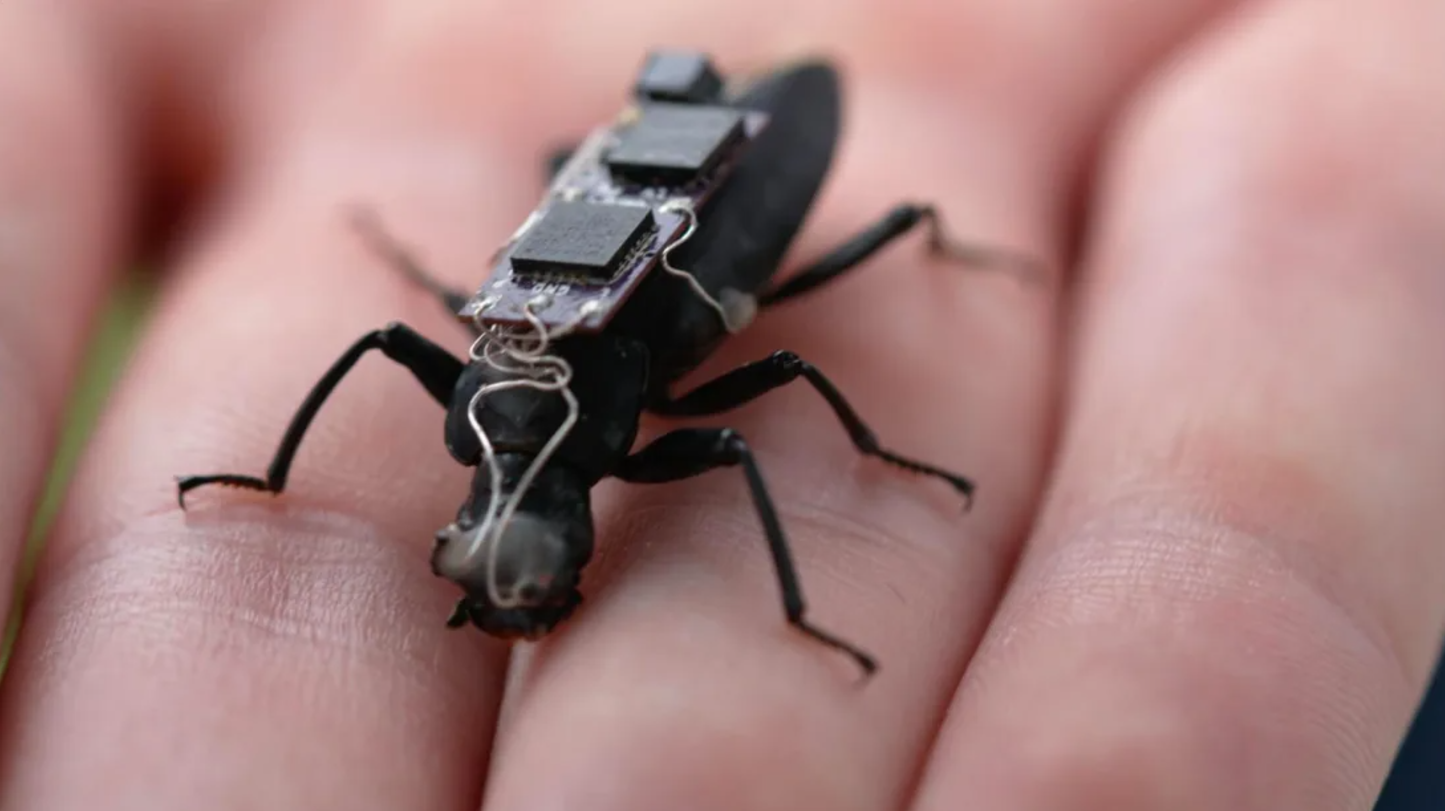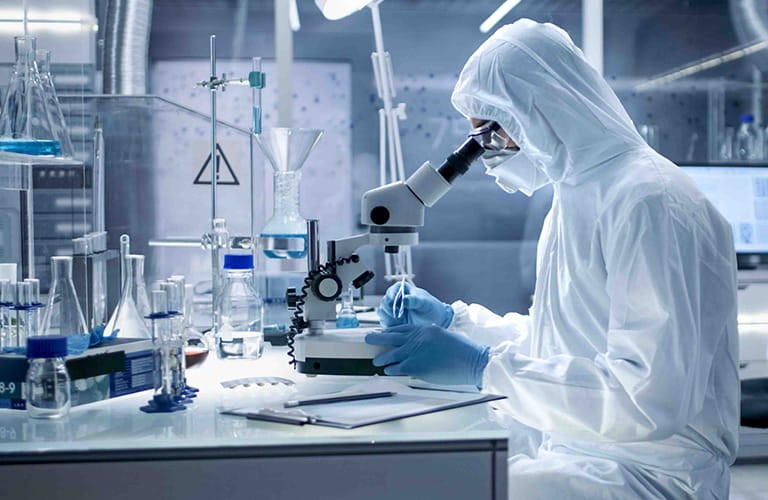In a groundbreaking experiment at the University of Queensland, student Lachlan Fitzgerald is turning beetles into cyborgs to potentially save lives in disaster situations. The process begins with the patient—a beetle—being submerged in an ice bath to numb its body in preparation for surgery. Once the beetle is sufficiently anesthetized, Fitzgerald carefully attaches a tiny circuit board to its back, creating a part-living, part-machine biohybrid robot.
As per the Leaders of Asia sources, the device, which resembles a backpack, sends electrical pulses to the beetle’s antennae, giving Fitzgerald control over its movements. By tapping into the beetle’s natural agility, he can direct the insect, only intervening if it strays from the intended path. Fitzgerald, who is studying mathematics and engineering, envisions a future where cyborg beetles could be used as search-and-rescue workers. “In the event of an urban disaster like an earthquake or bombing, where humans can’t safely access the site, we could send in these beetles to navigate the disaster zone quickly and efficiently,” he explains.
Fitzgerald works in a biorobotics lab that’s also experimenting with giant burrowing cockroaches and darkling beetles. While the thought of handling insects might deter some, Fitzgerald says, “No, they definitely don’t gross me out!” Insects, he believes, have a major advantage over traditional robots. Unlike machines that require complex computations to handle unpredictable environments, insects are highly adaptable, making them perfect candidates for tasks like disaster response.
The ultimate goal is for these cyborg insects to locate survivors, deliver life-saving drugs, and gather vital information in dangerous, hard-to-reach areas before human rescuers arrive. However, researchers still need to master controlling the insects with precision, a task that could take some time. Despite this, Fitzgerald remains optimistic, saying that in a few decades, cyborg beetles and cockroaches could be invaluable in life-saving operations.

According to the sources of Leaders of Asia, Fitzgerald is not alone in his quest to create biohybrid robots. At the California Institute of Technology (Caltech), scientists are implanting electronic pacemakers in jellyfish to control their swimming speed, with hopes of using bionic jellies to gather data from deep ocean environments. Meanwhile, researchers at Cornell University have developed robots controlled by a king oyster mushroom, harnessing the electrical signals produced by the fungus to sense environmental changes, such as soil chemistry.
As the field of biohybrid robotics grows, ethical concerns about the welfare of living organisms involved in these experiments have surfaced. Researchers at Caltech have collaborated with bioethicists to ensure their work does not cause harm to the jellyfish, while Fitzgerald asserts that the beetles with backpacks have normal life expectancies. “I don’t think they mind, per se,” he says, adding that it’s still unclear whether insects are conscious beings.
Though concerns about animal welfare are valid, Fitzgerald believes the potential benefits of this technology, especially in saving lives during disasters, outweigh any hesitancy people might have.









